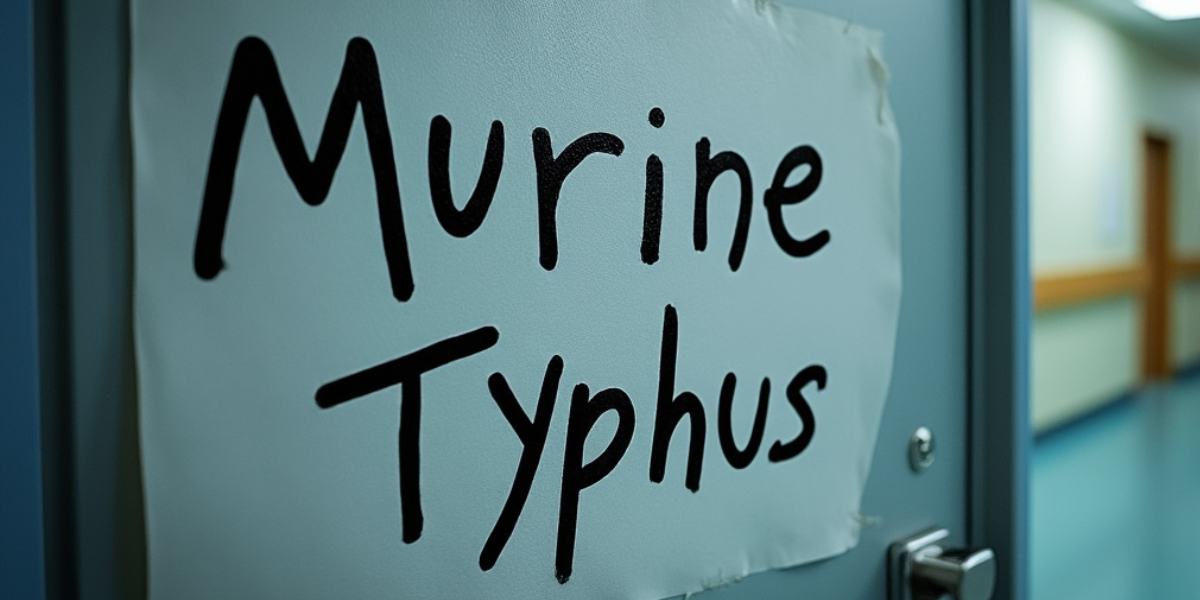Health officials have reassured the public that there is no need for alarm as Murine Typhus does not spread from person to person.
Published Oct 11, 2024 | 3:00 PM ⚊ Updated Oct 11, 2024 | 3:00 PM

What is Murine Typhus. (Supplied)
A 74-year-old man who recently returned from Cambodia to Thiruvananthapuram, Kerala, has been diagnosed with Murine Typhus, a flea-borne illness.
Upon experiencing severe body pains, fatigue and loss of appetite, the Kerala man sought treatment at a private hospital, where the medical tests revealed impaired liver and kidney function.
While initial tests for flea fever in Kerala were negative, the diagnosis of Murine Typhus was confirmed following subsequent tests at CMC Hospital in Vellore, Tamil Nadu.
According to the state health department, the patient’s condition is improving and is receiving care from the hospital’s emergency team.
Health officials have reassured the public that there is no need for alarm as the disease does not spread from person to person.
Murine Typhus is a flea-borne illness caused by the bacteria Rickettsia typhi and, less commonly, by Rickettsia felis.
It is transmitted to humans primarily through flea bites, particularly from fleas that infest rodents like rats, as well as animals such as cats and opossums. The disease is prevalent in tropical and subtropical regions.
Murine typhus spreads when flea faeces containing the bacteria come into contact with broken skin or mucous membranes. Infected fleas can carry the bacteria for life, even passing it to their offspring. Common animal hosts include:
It should be noted that the disease does not spread directly from person to person.
Key risk factors
Symptoms typically appear six to 14 days after exposure and can include:
The rash usually develops around the fifth day of illness, beginning on the torso and then spreading to other areas.
Murine typhus symptoms can resemble other illnesses, but in some cases, it may lead to neurological complications.
Due to the non-specific nature of early symptoms, diagnosis often relies on clinical suspicion. Laboratory tests may be used to confirm the infection, including:
Serologic tests are most effective when performed on samples taken during different phases of illness (acute and convalescent) to detect a rise in antibody levels.
Treatment
Murine typhus is treatable with antibiotics. Early treatment can reduce both the severity and duration of the illness. If left untreated, symptoms can persist for weeks and may become more severe, especially in the elderly or immunocompromised individuals.
According to the Indian Council of Medical Research (ICMR), rickettsial diseases are considered some of the most elusive emerging and re-emerging infections, and their prevalence in India is increasingly recognized.
These diseases have been documented in the country since the 1930s, with notable reports including:
Surveillance studies across various regions of India have revealed significant exposure to rickettsial infections in both animals and humans. The most commonly reported rickettsial disease in India is Scrub Typhus, but other notable diseases include Murine Flea-borne Typhus, Indian Tick Typhus, and Q fever.
While both Murine Typhus and Scrub Typhus share overlapping symptoms like fever and headache, they differ significantly in their transmission vectors (fleas vs. chiggers), clinical features (the eschar in scrub typhus), and geographic prevalence.
Scrub Typhus is generally more severe and widespread in the Asia-Pacific region, while Murine Typhus is milder and more globally distributed.
Murine Typhus and Scrub Typhus are both rickettsial diseases, but they differ in their causative agents, modes of transmission, symptoms, clinical course, and geographic distribution. Here’s a breakdown of their differences:
Causative Agents
Murine Typhus: Caused by Rickettsia typhi and occasionally Rickettsia felis.
Scrub Typhus: Caused by Orientia tsutsugamushi.
Transmission
Murine Typhus: Transmitted primarily by fleas, especially the rat flea (Xenopsylla cheopis), which becomes infected after feeding on rodents like rats and opossums. Humans contract the disease via flea bites or through contact with flea faeces.
Scrub Typhus: Transmitted through bites from infected chiggers (larval mites), commonly found in rural or vegetated areas of Southeast Asia, including India. These mites thrive in scrubby, grassy environments.
Symptoms
Murine Typhus:
Fever, chills, headache, body aches, nausea, vomiting.
A rash appears later in the illness (in about 50 percent of cases), but it is typically less prominent than in scrub typhus.
Scrub Typhus:
Sudden onset of fever, chills, severe headache, and a characteristic eschar (a dark scab) at the site of the chigger bite.
Swollen lymph nodes (lymphadenopathy) and a macular rash are common features.
Clinical course
Murine Typhus: Symptoms usually appear within 6 to 18 days after exposure. It is typically milder than scrub typhus, and the illness can resolve within a few weeks with appropriate antibiotic treatment.
Scrub Typhus: The illness can last longer and often requires more intensive treatment. If left untreated, it can lead to severe complications.
Geographic distribution
Murine Typhus: Found globally but is more common in tropical and subtropical regions where rodents are prevalent.
Scrub Typhus: Primarily endemic to the Asia-Pacific region, including countries like India, Japan, Korea, and northern Australia.
Treatment
Murine and Scrub Typhus: Treated effectively with antibiotics, primarily doxycycline. Early treatment is essential for reducing the severity and duration of both illnesses.
(Edited by Sumavarsha Kandula)
